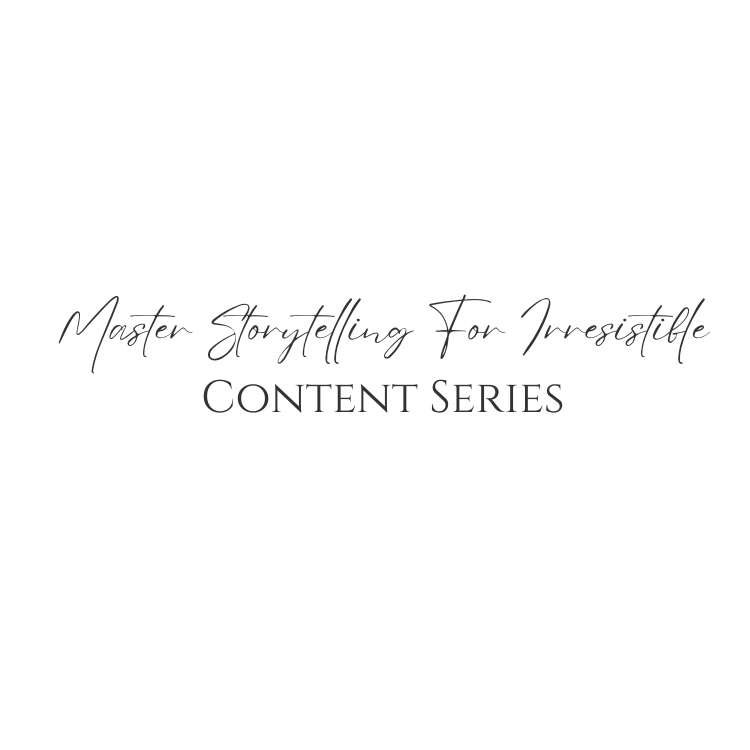You’re on a mission to create content that captivates your audience, builds trust, and drives sales. But how do you achieve this? The answer lies in mastering the art of master storytelling.

By taking your audience on a journey, step-by-step, and using a hero’s journey framework, you can establish a deep connection with them and ultimately lead them to take action.
To create an irresistible content series, you need to understand your audience’s needs and desires. This involves using empathy maps, conducting research through interviews and surveys, and visualizing the story sequence through storyboarding.
By using a hook that involves conflict and a unifying theme, you can draw your audience in and keep them engaged throughout the series.
Through repurposing and cornerstone content, you can extend the life of your content and continue to build your relationship with your audience.
In this article, we’ll explore how to master storytelling for an irresistible content series and establish yourself as a leader in your industry.
Key Takeaways to Master Storytelling
- To create an irresistible content series, master the know-like-trust factor and educate step-by-step through storytelling using the hero’s journey technique.
- Empathy mapping and research through interviews and surveys should inform the content direction, which can be shaped on a whiteboard and storyboarded to visualize the story sequence and give direction using a framework.
- The hook should involve conflict and be a unifying theme, while original and fresh content that fills a hole in the competition should be used to give dimension and build anticipation.
- Repurposing content into different mediums and directing traffic to original posts can turn the content series into cornerstone content that answers the prospect’s needs and lifts them out of their ordinary world, leading to a transaction.
Know-Like-Trust Factor
To succeed in creating an irresistible content series, you must master the know-like-trust factor by educating your audience step-by-step through the hero’s journey.

The first step is to use empathy mapping to understand your audience’s wants and needs, fears and hopes. This will help you shape your story in a way that resonates with your audience, building a connection and ultimately earning their trust.
But empathy mapping is just the beginning. You must also conduct research interviews and surveys to inform the direction of your content and ensure that it is meeting the needs of your audience.
By doing so, you can create a content series that guides prospects towards a transaction, building trust along the way.
Through this strategic and creative approach, you can engage an audience that has a subconscious desire for innovation and create a story that is both compelling and effective.
Master Storytelling Journey and Framework
You can guide your audience on a journey through your content series. By using a framework, you can give direction to your story and create anticipation for what comes next.

The hero’s journey is a popular framework that takes the protagonist on a journey of growth and transformation. This framework can be applied to your content series, with each piece of content representing a step in the journey.
To lead your audience to a transaction, your framework should ultimately lead to a resolution of the problem you introduced in the beginning of your series. The problem-agitate-solve framework is a great way to structure your content series. Each piece of content builds on the previous one to ultimately solve the problem for your audience.
By taking your audience on a journey and using a framework to give direction, you can create a compelling content series that leads to a transaction and builds trust with your audience.
Repurposing and Cornerstone Content
Transform your content into different forms to reach a wider audience and establish a cornerstone for your brand that will stand the test of time.
Repurposing old content is a cost-effective way to create new pieces that resonate with your audience. You can break down long-form content into shorter blog posts, infographics, podcasts, or videos. By doing so, you maximize your reach and make your content accessible to people who prefer different mediums.
Maximizing reach through repurposing also allows you to reinforce your brand’s message and establish yourself as an industry leader. Creating a content series that answers your prospects’ needs and repurposing it into different mediums can help you achieve this.
You can also use it as cornerstone content that potential clients can refer to as they move through the buyer’s journey. Repurposing content is a strategic approach that saves time and resources while delivering valuable content to your audience.




